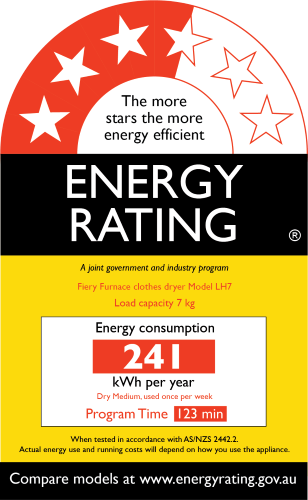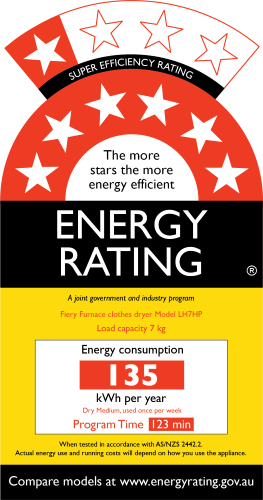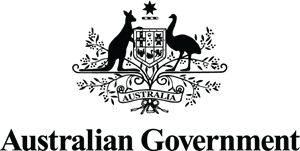For Industry
Clothes dryers

Overview
Clothes dryers are a great convenience, reducing the time it takes to complete a laundry cycle. However, they also consume a significant amount of energy, adding to household energy bills and emissions. The Energy Rating Label helps consumers choose more energy-efficient models, reducing costs and carbon footprint.
At a Glance
To fully understand legislative requirements, registrants should review the 2024 determination and its Explanatory Statement. They can be accessed from the Federal Registration of Legislation using the link in the table below.
| Determination | Minimum energy performance standards | Energy Rating Label |
|---|---|---|
|
Greenhouse and Energy Minimum Standards (Rotary Clothes Dryers) Determination 2024 Commenced 4 October 2025 |
Yes | Yes |
The determination:
- updates the testing and labelling requirements
- introduces new Australian and New Zealand standards.
Suppliers can continue to sell existing registered models. These requirements take effect when a model needs to be registered for sale in Australia.
Legislation
In Australia, this product is regulated under the Greenhouse and Energy Minimum Standards Act 2012.
In New Zealand, the relevant legislation is the Energy Efficiency (Energy Using Products) Regulations 2002. New Zealand has different requirements to Australia. Visit Clothes Dryers on the Energy Efficiency and Conservation Authority website for more information.
What products are covered?
Products covered by the determination include electric household rotary clothes dryers, irrespective of the context in which they are used. This includes:
- condenser and vented dryers
- heat pump condenser dryers
- an electric washer dryer combo appliance (which includes both washing and clothes drying functions that operates by the same methods as the above condenser or vented rotary clothes dryer).
Refer to section 6 of the determination for more details.
Technical requirements
-
Standards
Standards that are referenced in the new determination include:
- AS/NZS 2442.1:2021 Performance of household electrical appliances - Rotary clothes dryers, Part 1: Methods for measuring performance, energy and water consumption
- AS/NZS 2442.2:2021 Performance of household electrical appliances - Rotary clothes dryers, Part 2: Energy efficiency labelling requirements
The version of the standards that apply are the versions, including amendments, that existed when the determination was made on 10 September 2024.
-
Minimum Standards
The determination references minimum energy performance standards in Section 4.4 of AS/NZS 2442.1:2021.
-
Testing your product
The 2024 determination and standards incorporate several changes from the old 2015 determination about how the performance of clothes dryers are tested, including:
- expanding the definition of heating methods to include electric resistance elements, heat pumps and radio frequency devices
- modifying the test method to include the cool-down period up to the point of the program termination, which more closely aligns with international standards
- expanding the testing program to allow for loads up to 20kg
- specifying that the test voltage is 230V.
-
Other
Clothes dryers must meet the performance requirements mentioned in Section 3.2 of AS/NZS 2442.2:2021 (Drying Clothes in a Single Operation) and Section 3.3 of AS/NZS 2442.2:2021(Maximum Fabric Temperature).
Labelling requirements
The Energy Rating Label has changed and you must display the new:
- base Energy Rating Label used for models that meet 6 or below star ratings in half star rating increments
- super-efficiency Energy Rating Label used for models that meet 7 or above star ratings in full star rating increments.
The determination incorporates information on the Energy Rating Label and how the label is displayed.
Labelling transition
Models that were previously registered against the old 2015 determination can apply transitional arrangements to labelling for the remainder of the registration period. This means that some models may display either the new or the old label. Only one label should be displayed on any one product.
If a model is selected for check testing, the laboratory will test the product to the standards quoted on the energy rating label affixed to the purchased product. Market surveillance will continue to check that the label on the product matches the registration record, and that the product is correctly registered.
Program Time
Energy Rating Labels for clothes dryers must include ‘Program Time’, which is the time the product requires to complete the specified program used to measure its energy performance.

Displaying the Label
Products on display must include a label on the packaging, or if it is displayed outside the packaging, it should be applied on the model.
In each case, the Energy Rating Label must be clearly visible either printed on, adhered to, or be part of the packaging. If adhered to the packaging, then it can be attached by a double-sided swing tag or non-rotating single sided swing tag.

Need more help?
More information about the labelling requirements can be found in the Australian Standard, Performance of household electrical appliances - Rotary clothes dryers, Part 2: Energy efficiency labelling requirements – AS/NZS 2442.2:2021.
See Labelling for general labelling information and resources.
Models registered to the 2015 determination
Existing registrations have been updated in the Energy Rating Registration system to be registered against the 2024 determination. Registrants don’t need to do anything, and the registration will retain its remaining period of registration.

